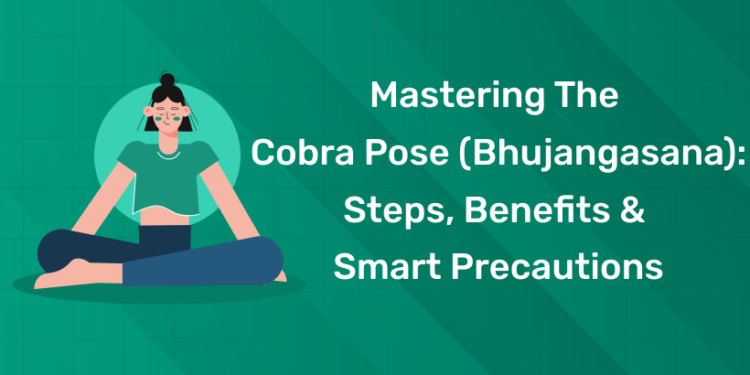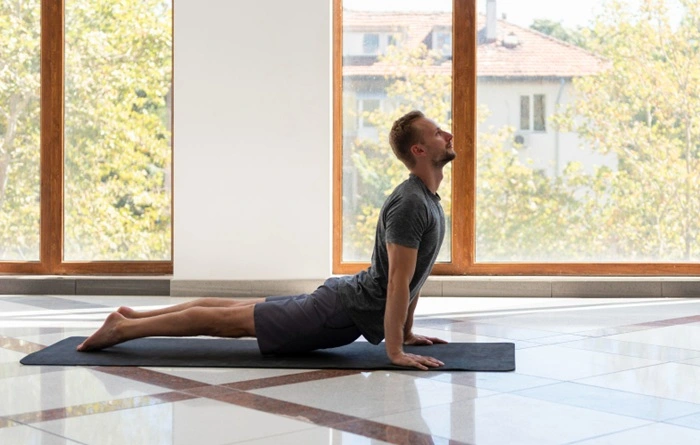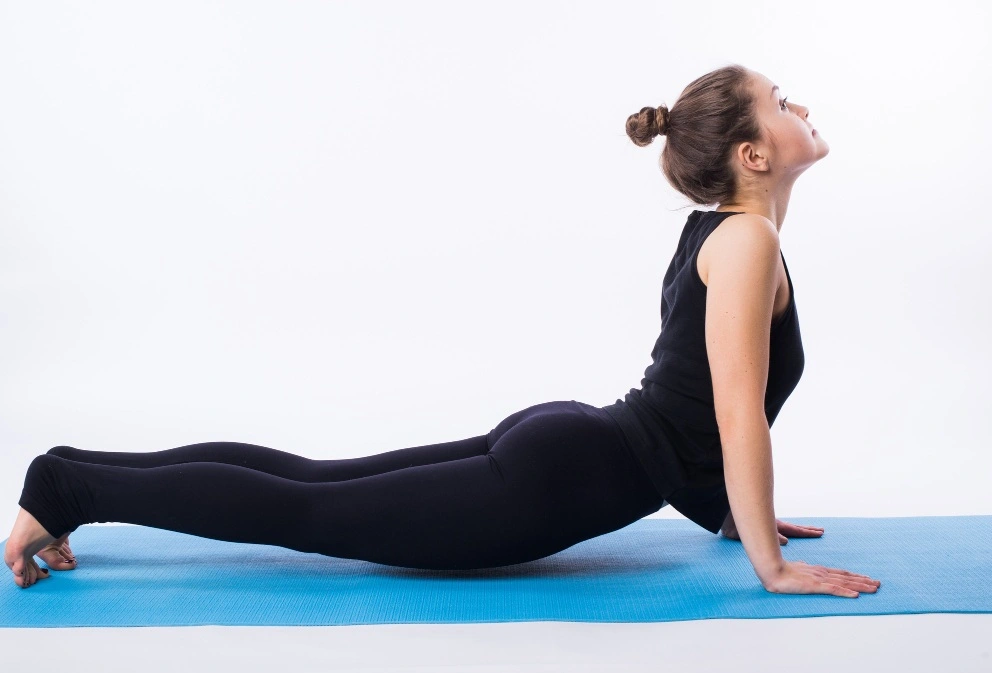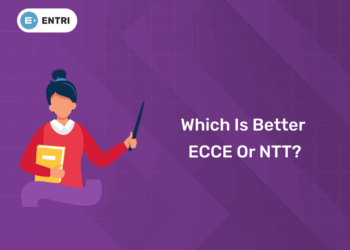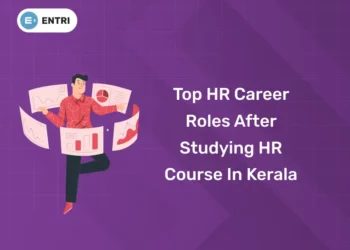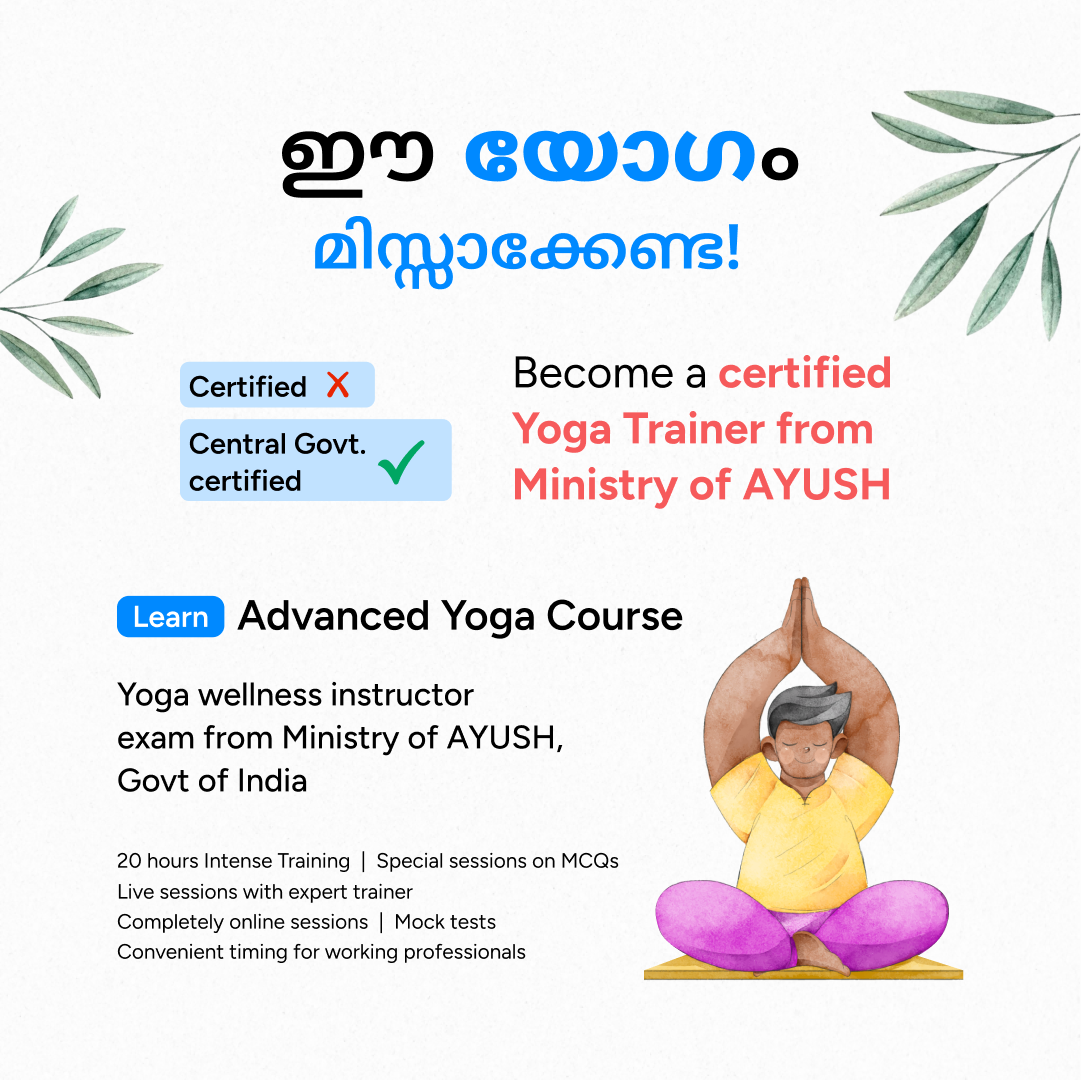Table of Contents
Bhujangasana (The Cobra Pose) is one of the most well-known backbends in yoga, and you’ll see it in all sorts of different classes, from the classical Hatha yoga sequences to the more flowing Vinyasa classes. Its most well known appearance is probably as part of the Surya Namaskar (Sun Salutation). When done properly, its supposed to build strength in the muscles along the back of your body, open up your chest, mobilise your spine, and give you a sense of alertness without any of the aggression – but on the other han,d if you do it wrong, you could end up compressing your spine or putting a strain on your wrists and neck.
This in-depth guide is going to give you a breakdown on how to do the Cobra: how to set yourself up, breathe and get your alignment right; all the good things the Cobra can do for you; variations that will work for different bodies; and all the things you need to watch out for – the things that could cause you problems. You’ll also see how taking a structured approach to your learning, like what we do at the Entri Yoga Teacher Training Course, can help you develop the skills you need to teach safely and with confidence.
Get Confident! Join Our Yoga Teacher Training Course!
What’s Bhujangasana?
- Its Sanskrit for “snake” or “serpent” and “posture” – so its literally the serpent pose.
- You start flat on your front with your lower half on the ground, and you lift your chest and shoulders off the ground so that you’re in a gentle to moderate backbend.
- You’re in the backbend family – along with heart openers – and its a prep for more advanced poses – like Upward-Facing Dog, Bow Pose and Camel Pose.
Key Stuff You Need to Know
1: Which of these is the primary goal of yoga practice?
- You’ve got to get the shape right: chest open, shoulders back and your lower half grounded.
- It involves pulling your shoulders down and back, extending your thoracic spine and using the muscles along the back of your body to lift you up off the ground.
- Practiced properly the Cobra can do a lot of good – here are some of the benefits:
- Strengthening the back
- It’ll tone the muscles that run along your spine and the bits at the back of your shoulders.
- Spine and chest mobilisation
- Its good for the bit of your spine that’s right in the middle (your thoracic spine) – the part that gets tight from sitting all day.
- Opening up your chest
- It’ll help loosen the muscles at the front of your chest and your hip flexors and that can help make it easier to breathe.
- Respiratory benefits
- It can even help if you’re having trouble breathing, by opening up your chest and helping you get that diaphragm working properly.
- Body awareness
- Its good for getting you aware of where your shoulders are and how your spine is aligned – that’s useful if you spend a lot of time slumped over a computer.
- Easing stiffness
- Its possible that it could even help loosen up some of the stiffness in your back and shoulders – but you do have to do it right.
For teachers: When you’re teaching this pose, try not to promise that it will cure people of all their aches and pains – use words like “may help”, “can support” or “some people have reported” and make it clear that everyone is different.
Become a Certified Yoga Instructor
Yoga Teacher Training Course by Entri App: Master authentic yoga techniques, earn certification, and build a successful career as a professional yoga instructor.
Join Now!Contraindications & Precautions
Avoid or modify Bhujangasana if you have:
- Acute low-back pain, herniated disc, severe spondylolisthesis, or recent spinal surgery.
- Uncontrolled hypertension, recent cardiac events, or glaucoma: avoid breath holds or extreme backbends.
- Carpal tunnel syndrome or wrist inflammation, use Sphinx Pose (forearms) or fists/blocks.
- Pregnancy (2nd/3rd trimester), generally avoid prone backbends; use supported heart-openers instead.
- Abdominal surgery (recent), peptic ulcers, or hernia, take medical guidance; consider gentler variations.
- Neck issues, keep gaze low/neutral; avoid dropping the head back.
Golden rule: No sharp or radiating pain. If discomfort appears, exit, regress, or modify.
Step-by-Step: How to Do Bhujangasana
- Set Up (Prone)
- Lie on your belly. Legs extended hip-width or together (choose what feels most stable). Tops of feet press into the mat; kneecaps gently lift.
- Place hands under (or slightly ahead of) the shoulders, elbows hugging in. Spread fingers; middle fingers point forward.
- Pubic bone & front hip points anchor into the mat to lengthen lower back. Draw lower belly slightly in and up to support the lumbar spine.
- Lie on your belly. Legs extended hip-width or together (choose what feels most stable). Tops of feet press into the mat; kneecaps gently lift.
- Inhale: Lengthen
- On a smooth inhale, lengthen the spine forward (think: chest sliding forward rather than pushing up).
- Engage back muscles to peel the chest off the mat a few centimetres. Elbows remain bent and close to ribs.
- On a smooth inhale, lengthen the spine forward (think: chest sliding forward rather than pushing up).
- Exhale: Stabilise
- Lightly press the tops of the feet and pubic bone down for a stable base.
- Broaden collarbones, draw shoulder blades down and in toward the back pockets (scapular depression + retraction).
- Lightly press the tops of the feet and pubic bone down for a stable base.
- Inhale: Refine Lift
- Lift only to the height where you feel length, not compression. Many practitioners stay in Low Cobra (Bhujangasana A): ribs mostly on the mat, elbows bent, chest broad.
- Keep the back of neck long; gaze slightly forward and down. Avoid jamming the chin upward.
- Lift only to the height where you feel length, not compression. Many practitioners stay in Low Cobra (Bhujangasana A): ribs mostly on the mat, elbows bent, chest broad.
- Breathe & Hold (3–5 breaths)
- Soften the glutes (not clenched rigidly); allow balanced support from hamstrings/glutes without gripping.
- Keep ribs drawing in and belly gentle, avoid forceful belly pushing into the mat.
- Soften the glutes (not clenched rigidly); allow balanced support from hamstrings/glutes without gripping.
- Exit on Exhale
- Lower down slowly. Turn head to one side, rest arms by sides, and relax the lower back. Take 1–2 recovery breaths.
Teacher cueing:
“From belly, hands by chest, elbows in. Press feet and pubic bone down. Inhale, lengthen the heart forward, then lift, keep the neck long. Exhale, soften the shoulders down the back. Breathe into the ribs. Come down slowly.”
Alignment Checkpoints (Self-Audit)
- Wrists–Elbows–Shoulders: At your height, elbows should not splay out. If they do, lower or step hands slightly forward.
- Neck: Back of neck long; chin neither jutting nor collapsed.
- Shoulders: Away from ears; blades glide in/down (no winging).
- Lumbar feel: No pinching. If you feel compression, reduce height, engage lower abdominals, or try Sphinx.
- Legs/feet: Tops of feet pressing, thighs active; inner ankles neither collapsing nor over-sickling.
Become a Certified Yoga Instructor
Yoga Teacher Training Course by Entri App: Master authentic yoga techniques, earn certification, and build a successful career as a professional yoga instructor.
Join Now!Breathwork (Pranayama Notes)
- Inhale: Promote length in the front body; feel breath expand across the rib cage.
- Exhale: Ground, draw lower belly gently inward, and stabilise scapulae.
- Avoid holding breath. Smooth, even breathing maintains a parasympathetic tone in a stimulating pose.
Variations & Props (Choose for Your Body)
- Sphinx Pose (Salamba Bhujangasana): Most joint-friendly
- Forearms down, elbows under shoulders, palms flat. Ideal for wrist challenges and as a thoracic-focused backbend.
- Low Cobra (Bhujangasana A): Beginner standard
- Elbows bent, minimal push with hands; back muscles lead the lift. Builds strength and patterning.
- High Cobra (Bhujangasana B): Stronger version
- Hands press more, elbows may extend partially. Only if lumbar feels safe and thoracic extension leads.
- Block Assist
- Place blocks under palms at the lowest height to reduce wrist extension or bring the floor closer.
- Blanket Under Pelvis/Ribs
- If pubic bone sensitivity occurs, pad lightly. If ribs feel tender, a thin blanket under lower ribs can help.
- Hands Forward Cobra
- Move hands 2–3 cm forward to decrease lumbar compression and emphasise thoracic lift.
- Active-Leg Cobra
- Loop a strap around thighs to encourage inner thigh engagement and neutral femurs.
- Loop a strap around thighs to encourage inner thigh engagement and neutral femurs.
Common Mistakes & Fixes
| Mistake | What it looks like | Quick fix |
| Shoulders up by ears | Neck/upper traps gripping | “Slide shoulder blades into back pockets.” Press palms lightly; widen collarbones. |
| Elbows winging out | Hands too far forward/outside | Bring hands under shoulders; hug elbows in; lower height. |
| Neck crunch | Chin juts; gaze to ceiling | Keep gaze forward–down; lengthen back of neck. |
| Low-back pinch | Sensation jammed at L4/L5 | Lower into Low Cobra or Sphinx; engage lower belly; move hands slightly forward. |
| Over-gripping glutes | Butt clenched, sacrum compressed | Soften; aim for balanced hamstring–glute support; stabilise via core. |
| Dumping into wrists | Heaviness in wrists, elbows locked | Distribute weight through feet/pelvis; keep elbows soft; try forearms/blocks. |
Intelligent Sequencing: Where Cobra Fits
Warm-ups (5–8 minutes):
- Cat–Cow (spinal mobilization)
- Child’s Pose → Puppy Pose (shoulder/heart opening)
- Prone shoulder flossing (arms in cactus)
- Locust (Salabhasana) prep, lift arms, chest, then legs (separately)
Peak mini-sequence (example):
- Sphinx (3–5 breaths) →
- Low Cobra (3–5 breaths, 2 rounds) →
- High Cobra (optional; 3 breaths) →
- Locust (arms back) →
- Cobra again to integrate
Counterposes (always):
- Child’s Pose (Balasana) or Thread the Needle (gentle thoracic rotation)
- Supine twist (gentle)
- Knees-to-chest (Apanasana) for lumbar decompression
Integrating into Surya Namaskar
In many flows, Bhujangasana substitutes for Urdhva Mukha Svanasana:
- From Chaturanga or knees-chest-chin, lower fully to the mat.
- Slide hands back under shoulders, lift to Low Cobra, then return to Adho Mukha Svanasana (Downward Dog).
- Beginners and those with lumbar/wrist sensitivity should choose Cobra over Up-Dog until strength, mobility, and patterning are solid.
For Specific Populations (Teaching Lens)
- Beginners/desk workers: Emphasise Sphinx → Low Cobra. Cue “length first, height second.”
- Hypermobile students: Limit range; co-contract back body + core; avoid end-range hang.
- Athletes/runners: Keep legs active; integrate hamstring/glute engagement to protect lumbar.
- Prenatal: Avoid prone backbends beyond 1st trimester; opt for supported heart-openers (e.g., bolster under thoracic spine, seated cow face arms).
- Postnatal (after clearance): Begin with Sphinx; watch abdominal pressure; rebuild gradually.
- Neck sensitivity: Keep gaze down, imagine lengthening through the crown, and stabilise the shoulder girdle.
A 15-Minute Home Practice Featuring Cobra
- Centering (1 min): Belly down, hands stacked under forehead, diaphragmatic breaths.
- Cat–Cow (2 min): 6–8 rounds.
- Puppy Pose (1 min): Shoulders and heart open.
- Sphinx (2 × 5 breaths): Rest between rounds.
- Low Cobra (2 × 5 breaths): Focus on length; elbows in.
- Locust (2 × 3 breaths): Arms back; chest/legs light.
- Cobra (1–2 rounds): Choose your safe height.
- Child’s Pose (1–2 min): Full release.
- Supine twist + Apanasana (2 min): Unwind.
- Seated breath (1 min): Slow inhales/exhales; close with gratitude.
For Aspiring Yoga Teachers: Cueing, Spotting, and Ethics
- Cue intent, not just shapes. “Length first, then lift,” “Broaden the collarbones,” “Neck stays long.”
- See what’s happening. Is the student pushing with arms or lifting with back muscles? Are shoulders creeping up?
- Offer choices. “Stay in Sphinx or Low Cobra if that’s best for your back today.”
- Mind touch. If offering adjustments, ask consent and use minimal, educational touch.
- Language of safety. “Pain-free range,” “If you feel pinching, lower or exit.”
- Progress gradually. Map a path: Sphinx → Low Cobra → High Cobra → (maybe) Up-Dog over weeks/months.
How a Yoga TTC Elevates Your Cobra
Self-practice is invaluable, but structured learning turns intuition into a repeatable method. The Entri Yoga TTC course helps you:
- Decode anatomy of backbends, spinal curves, scapular mechanics, core-glute balance.
- Master progressions from Sphinx to Up-Dog safely, including prop strategies for diverse bodies.
- Design sequences (warm-ups, peaks, counterposes) that respect physiology and nervous-system states.
- Refine cueing for clarity and inclusivity (Tamil/English/Hinglish classroom realities).
- Build assessment skills, observe, regress, or progress students responsibly.
- Teach with confidence online or in-person, with lesson plans, practicum feedback, and community support.
If you aspire to teach, or simply want a deeper, safer practice, a TTC gives you the structure and mentorship that YouTube clips can’t.
Key Takeaways
- Bhujangasana is a strength-based heart-opener, not an arms-only push-up. Lead with length, not height.
- Keep shoulders away from ears, elbows hugging in, and neck long.
- If the low back pinches, regress: Sphinx, hands forward, or lower height, no pain is non-negotiable.
- Pair Cobra with Locust for back strength and Child’s Pose for decompression.
- Use variations and props to meet different bodies, that’s wise, not “less.”
- For teachers, clear cueing, options, and consent-based adjustments are the bedrock of safe classes.
- Deepen your understanding through a quality Yoga TTC, it transforms good poses into great, teachable practices.
Final Word
When Bhujangasana flows from length, breath, and intelligent support, it becomes more than a pose; it’s a reset button for posture, mood, and mindful energy. Practice with curiosity, choose the variation your body asks for today, and keep your awareness kind. If you’re ready to share this wisdom with others, a structured journey like the Entri Yoga TTC course can turn your personal practice into professional excellence, one safe, steady backbend at a time.
Become a Certified Yoga Instructor
Yoga Teacher Training Course by Entri App: Master authentic yoga techniques, earn certification, and build a successful career as a professional yoga instructor.
Join Now!Frequently Asked Questions
Is Cobra Pose safe for lower-back pain?
It can be, if the pain is not acute and you work at a low height (Sphinx or Low Cobra) with core engagement and no pinching. If pain persists or radiates, stop and seek professional advice.
Should I squeeze my glutes?
Avoid hard clenching. Aim for balanced, moderate engagement of glutes and hamstrings with a gently lifted lower belly.
How high should I lift?
Only as high as you can maintain length in the front body, broad collarbones, and no lumbar compression. Quality over height.
Cobra vs Upward-Facing Dog, what’s the difference?
In Cobra, pelvis and sometimes lower ribs stay grounded, elbows often bent. In Up-Dog, thighs and pelvis are lifted, arms straight, and backbend is deeper. Many bodies benefit from mastering Cobra first.
Can I practice Cobra every day?
Yes, if done mindfully with counterposes and without pain. Vary height and include Sphinx/Locust to balance effort.
My wrists hurt, what now?
Try Sphinx (forearms), place hands slightly forward, or use fists/blocks. Strengthen forearms and mobilise wrists in warm-ups.


